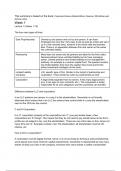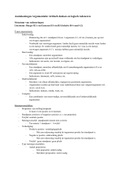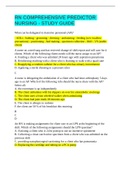Samenvatting
Finance and Investment Summary for Economics Tilburg University. Grade achieved using summary: 9.5/10.
- Vak
- Instelling
- Boek
Even though the course decided to switch up its name recently (previously called Business Economics 2 for ECO: Finance), the content remains the same, all condensed into this 32 page summary, including examples. The summary is based off ALL video lectures, slides, and readings from the book: "Corpo...
[Meer zien]









